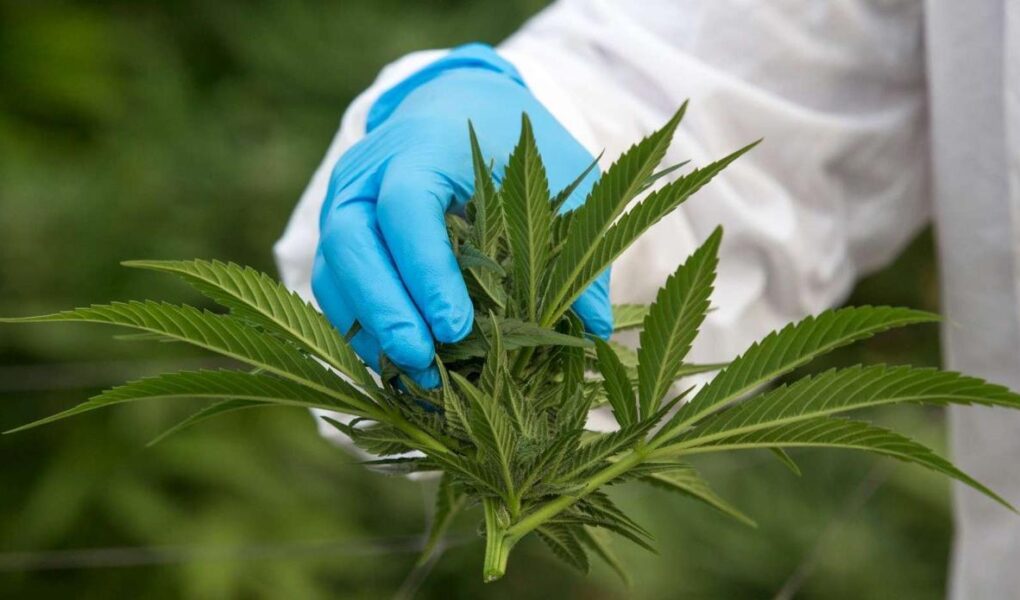As the green wave of cannabis legalization sweeps across the globe, the cannabis plant finds itself at the center of a captivating dialogue. Once relegated to the shadows of stigma and misunderstanding, it now stands proudly in the spotlight, beckoning curiosity and inquiry from enthusiasts and skeptics alike. In this exploration of “cannabis facts,” we unravel the intricacies of this multifaceted herb, shedding light on its history, medicinal uses, and cultural significance. Whether you’re a seasoned aficionado or a newcomer seeking clarity, our journey will empower you with knowledge—strip away the myths, and discover the truths that shape the world of cannabis today. Join us as we embark on this enlightening expedition into the world of cannabis, where facts meet fascination.
Table of Contents
- Understanding the Science Behind Cannabis and Its Therapeutic Benefits
- Exploring the Legal Landscape: Navigating Cannabis Regulations Globally
- Cultivating Cannabis: Best Practices for Home Growers and Enthusiasts
- Dispelling Myths: Common Misconceptions About Cannabis Use and Effects
- Q&A
- In Retrospect
Understanding the Science Behind Cannabis and Its Therapeutic Benefits
At the heart of cannabis’ therapeutic benefits lies a complex interplay of cannabinoids, terpenes, and the human endocannabinoid system. Cannabinoids, primarily tetrahydrocannabinol (THC) and cannabidiol (CBD), bind to receptors throughout the body, modulating various physiological processes. This interaction helps in managing pain, reducing inflammation, and alleviating anxiety, among other benefits. The entourage effect suggests that these compounds work synergistically, enhancing each other’s effectiveness. Thus, full-spectrum products that retain a broad profile of cannabinoids and terpenes often provide superior outcomes compared to isolates.
Understanding how these compounds affect our bodies can empower patients to make informed decisions about their treatment options. Recent research highlights that different strains of cannabis can offer distinct therapeutic profiles, tailored to individual needs. For example, sativa strains may be more energizing and suitable for daytime use, while indica strains are typically used for relaxation and sleep. A brief comparison of cannabis types is shown below:
| Type | Primary Effects | Recommended Use |
|---|---|---|
| Sativa | Uplifting, Energetic | Daytime |
| Indica | Relaxing, Sedative | Evening/Nighttime |
| Hybrid | Balanced, Variable | Anytime |
Furthermore, ongoing studies continue to uncover the potential of cannabis in treating chronic conditions such as multiple sclerosis, epilepsy, and even cancer-related symptoms. The diversity of chemical compounds found in cannabis underscores its multifaceted utility and the importance of personalized treatment approaches in harnessing its full potential.
Exploring the Legal Landscape: Navigating Cannabis Regulations Globally
The global cannabis landscape is a complex web of regulations that vary dramatically from one country to another, reflecting a wide spectrum of cultural attitudes towards cannabis use, commerce, and cultivation. In North America, legalization journeys have paved the way for both recreational and medical cannabis markets, where countries like Canada have instituted comprehensive regulatory frameworks. In contrast, European nations display a mix of legalization and strict prohibition, as seen in countries like Germany, which recently moved to establish a regulated market, while many others remain hesitant due to historical stigmatization. Meanwhile, in Asia and parts of the Middle East, cannabis is often viewed through a conservative lens, with harsh penalties still in place in several jurisdictions despite small movements towards reform in the region.
Understanding the nuances of these regulations is crucial for anyone looking to engage with the cannabis industry globally. For instance, while some regions might prioritize medical use, placing conditions on accessibility and sales, others may focus on decriminalizing possession or even allowing home cultivation. The following table highlights some examples of cannabis regulations across key regions:
| Region | Legal Status | Key Features |
|---|---|---|
| North America | Legal (varies by state) | Recreational use, medical markets with licenses |
| Europe | Mixed | Medical use in some states; limited recreational laws |
| Asia | Mostly illegal | Growing movements for medical use in select countries |
| Latin America | Varies; some countries legalized | Legalization for medical use in several nations |
As international perspectives on cannabis continue to evolve, staying informed about legal developments is essential for both consumers and businesses. Embracing this knowledge can facilitate smoother navigation through the intricate regulatory mazes and contribute to informed advocacy for policy changes, ultimately shaping the future of cannabis across the globe.
Cultivating Cannabis: Best Practices for Home Growers and Enthusiasts
Growing cannabis at home can be a rewarding experience, but achieving the best results requires a deep understanding of the plant and its needs. First and foremost, selecting the right strain is crucial—consider both your climate and your growing environment. Whether you choose to cultivate indoor or outdoor, ensure that your setup offers adequate light, ventilation, and temperature control. It’s also essential to maintain optimal humidity levels throughout the plant’s growth stages; this can vary widely from seedling to flowering phases.
Nutrition plays a significant role in the growth of cannabis. Regularly monitor the pH levels of your soil or hydroponic solution, as it can affect nutrient absorption. Here are some key nutrients to focus on:
- Nitrogen (N): Vital for leafy growth during the vegetative stage.
- Phosphorus (P): Essential for roots and flowering, boosting bud development.
- Potassium (K): Important for overall plant health and resilience against diseases.
When planning your feed schedule, consider an easy, visual guide like this:
| Stage | Nutrient Ratio (N-P-K) |
|---|---|
| Seedling | 1-2-2 |
| Vegetative | 3-1-2 |
| Flowering | 1-3-4 |
Dispelling Myths: Common Misconceptions About Cannabis Use and Effects
Despite the growing acceptance of cannabis, several misconceptions continue to cloud public perception. One common myth is that all cannabis strains are the same, leading to the belief that their effects are uniform. In reality, the cannabis plant comprises numerous strains, each possessing unique profiles that influence their effects. For instance, Sativa strains are often associated with uplifting and energizing effects, while Indica strains are known for their calming and sedative properties. Furthermore, the chemical composition of cannabis, particularly the balance of cannabinoids such as THC and CBD, plays a pivotal role in determining the experience. Understanding these distinctions can help users make informed choices that align with their desired effects.
Another prevalent misconception is that cannabis universally impairs cognitive function. Research indicates that while high doses can lead to temporary impairments, moderate use does not substantially degrade cognitive performance for most users. Consider the following points regarding cannabis and cognition:
- Short-term effects: High THC levels can lead to alterations in memory and attention during the intoxication phase.
- Long-term effects: Evidence suggests that adults who use cannabis moderately do not experience significant cognitive decline.
- Dual usage: Some studies indicate that certain cannabinoids, such as CBD, may actually promote neuroprotective effects.
Q&A
Q&A: Unpacking Cannabis Facts
Q: What is cannabis, and how does it differ from hemp?
A: Cannabis is a versatile plant known for its psychoactive properties and medicinal uses. It falls under the Cannabaceae family and has two main species: Cannabis sativa and Cannabis indica. Hemp, a type of Cannabis sativa, is cultivated primarily for industrial purposes such as textiles, rope, and biodegradable plastics, and it contains very low levels of THC (tetrahydrocannabinol), the compound responsible for the “high.”
Q: What are cannabinoids, and why are they important?
A: Cannabinoids are chemical compounds found in cannabis that interact with the body’s endocannabinoid system, which plays a crucial role in regulating various physiological processes, including mood, appetite, and pain. The two most well-known cannabinoids are THC, which has psychoactive effects, and CBD (cannabidiol), which is non-psychoactive and is often praised for its potential therapeutic properties.
Q: Are all cannabis strains the same?
A: Not at all! Cannabis plants can vary significantly based on strain, which affects their cannabinoid and terpene profiles. Strains are often categorized into three groups: indica (known for relaxing effects), sativa (associated with energizing effects), and hybrids (a mix of both). Each strain can produce different experiences and effects, catering to various preferences and therapeutic needs.
Q: Is cannabis safe for everyone?
A: While many people use cannabis safely, it’s not suitable for everyone. Individual reactions can vary based on factors like age, health conditions, and personal sensitivity. For some, cannabis may exacerbate anxiety or lead to temporary cognitive impairment. It’s always advisable to consult healthcare professionals, especially for those with pre-existing conditions or those taking medication.
Q: Can cannabis be addictive?
A: The potential for cannabis use disorder exists, particularly in individuals who begin using at a young age or use it frequently. Studies suggest that around 9% of users may develop a dependence, with the risk increasing among those who start using during adolescence. Responsible use is key, and being mindful of one’s consumption habits is essential.
Q: What are the legal implications of cannabis use?
A: The legality of cannabis varies widely around the world. In some regions, it is fully legal for both recreational and medicinal use, while others maintain strict prohibitions. It’s crucial for users to be aware of local laws regarding cultivation, possession, and use to avoid legal complications.
Q: Can cannabis be used for medicinal purposes?
A: Yes, cannabis is increasingly recognized for its medicinal benefits. It has been used to manage conditions like chronic pain, epilepsy, and nausea due to chemotherapy. However, ongoing research is vital to better understand its therapeutic potentials and to establish standardized dosing guidelines.
Q: What’s the relationship between cannabis and mental health?
A: The relationship between cannabis and mental health is complex. Some studies suggest potential benefits for conditions like PTSD and depression, while others indicate that heavy use might increase risks for anxiety and mood disorders. More research is needed to unravel these nuances and better guide treatment approaches.
By exploring these questions, readers can acquire a clearer, balanced understanding of cannabis and its myriad implications. Knowledge is key, whether for recreational purposes, potential medicinal use, or simply to navigate the evolving landscape of cannabis culture.
In Retrospect
As we draw the curtain on our exploration of cannabis facts, it’s clear that this ancient plant continues to be a source of fascination, debate, and discovery in the modern world. From its complex chemistry to its myriad of applications—ranging from medicinal use to sustainable manufacturing—cannabis stands at the intersection of tradition and innovation. Whether you’re a seasoned connoisseur or a curious newcomer, understanding the breadth of cannabis knowledge empowers you to engage with its potential benefits and challenges. As legal landscapes shift and research flourishes, the narrative surrounding cannabis is ever-evolving. So, as we close this chapter, remember that the story of cannabis is far from finished; it invites us all to remain curious, informed, and open-minded.



